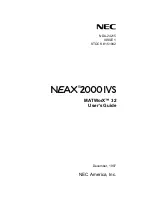
990
% Activation failed
■
Startup hotfixes cannot be manually activated. If you attempt to manually activate
a startup hotfix, the operation fails and generates the following error message:
% Manual activation not allowed
■
Example
host1#
hotfix activate hf63037.hfx
■
Use the
no
version to manually deactivate the specified hotfix. Deactivation
restores the system to the state that existed before the hotfix was activated. You
can specify the
all
keyword to deactivate all active hotfixes.
When you deactivate hotfixes that have dependencies, you must deactivate them
in the reverse sequence from which they were armed. However, if you have
issued the
all
keyword, the disarming automatically takes place in the correct
order.
■
See hotfix activate.
Monitoring Hotfixes
Several commands provide information about hotfixes that have been loaded on the
router. You can use the
show hotfix
command to discover the armed and activation
status of all hotfixes or a specific hotfix. The output lists the hotfix by name and a
unique ID number, which is useful if the filename has been changed. This command
also displays dependencies for each hotfix; that is, other hotfixes that must be
activated before that hotfix can be activated. For more usage details and sample
output, see “show hotfix” on page 398.
The
dir
command displays all hotfixes present on the local flash card. The in use
field indicates that the hotfix is either currently activated or armed to be activated
as a startup hotfix for the currently armed release.
host1#
dir
*** Active/standby file systems are not synchronized. ***
Active System Controller:
unshared in
file size size date (UTC) use
------------------------- --------- --------- ------------------- ---
reboot.hty 596288 596288 03/07/2005 19:35:52
system.log 6762 6762 03/07/2005 17:30:08
haIpSetup.mac 4874 4874 03/24/2004 10:02:08
6-0-1p0-5.rel 148489185 148489185 02/28/2005 18:17:32 !
hf63035.hfx 30445 30445 03/07/2005 14:04:02 !
hf63030.hfx 28675 28675 03/05/2005 18:22:32
...
You can use the
show version
command to display a summary of each of the hotfixes
currently activated on the system, including the hotfix name and hotfix ID.
Updating the Router with JUNOSe Hotfix Files
■
397
Chapter 6: Managing Modules
Содержание JUNOSe 11.1
Страница 6: ...vi...
Страница 8: ...viii JUNOSe 11 1 x System Basics Configuration Guide...
Страница 24: ...xxiv List of Figures JUNOSe 11 1 x System Basics Configuration Guide...
Страница 32: ...2 Chapters JUNOSe 11 1 x System Basics Configuration Guide...
Страница 58: ...28 Configuring Remote Access JUNOSe 11 1 x System Basics Configuration Guide...
Страница 176: ...146 Downgrading JUNOSe Software JUNOSe 11 1 x System Basics Configuration Guide...
Страница 280: ...250 Monitoring SNMP JUNOSe 11 1 x System Basics Configuration Guide...
Страница 384: ...354 Monitoring the System JUNOSe 11 1 x System Basics Configuration Guide...
Страница 446: ...416 Monitoring Modules JUNOSe 11 1 x System Basics Configuration Guide...
Страница 580: ...550 Monitoring Virtual Routers JUNOSe 11 1 x System Basics Configuration Guide...
Страница 581: ...Part 2 Reference Material Abbreviations and Acronyms on page 553 References on page 571 Reference Material 551...
Страница 582: ...552 Reference Material JUNOSe 11 1 x System Basics Configuration Guide...
Страница 622: ...592 Hardware Standards JUNOSe 11 1 x System Basics Configuration Guide...
Страница 623: ...Part 3 Index Index on page 595 Index 593...
Страница 624: ...594 Index JUNOSe 11 1 x System Basics Configuration Guide...
Страница 640: ...610 Index JUNOSe 11 1 x System Basics Configuration Guide...
















































